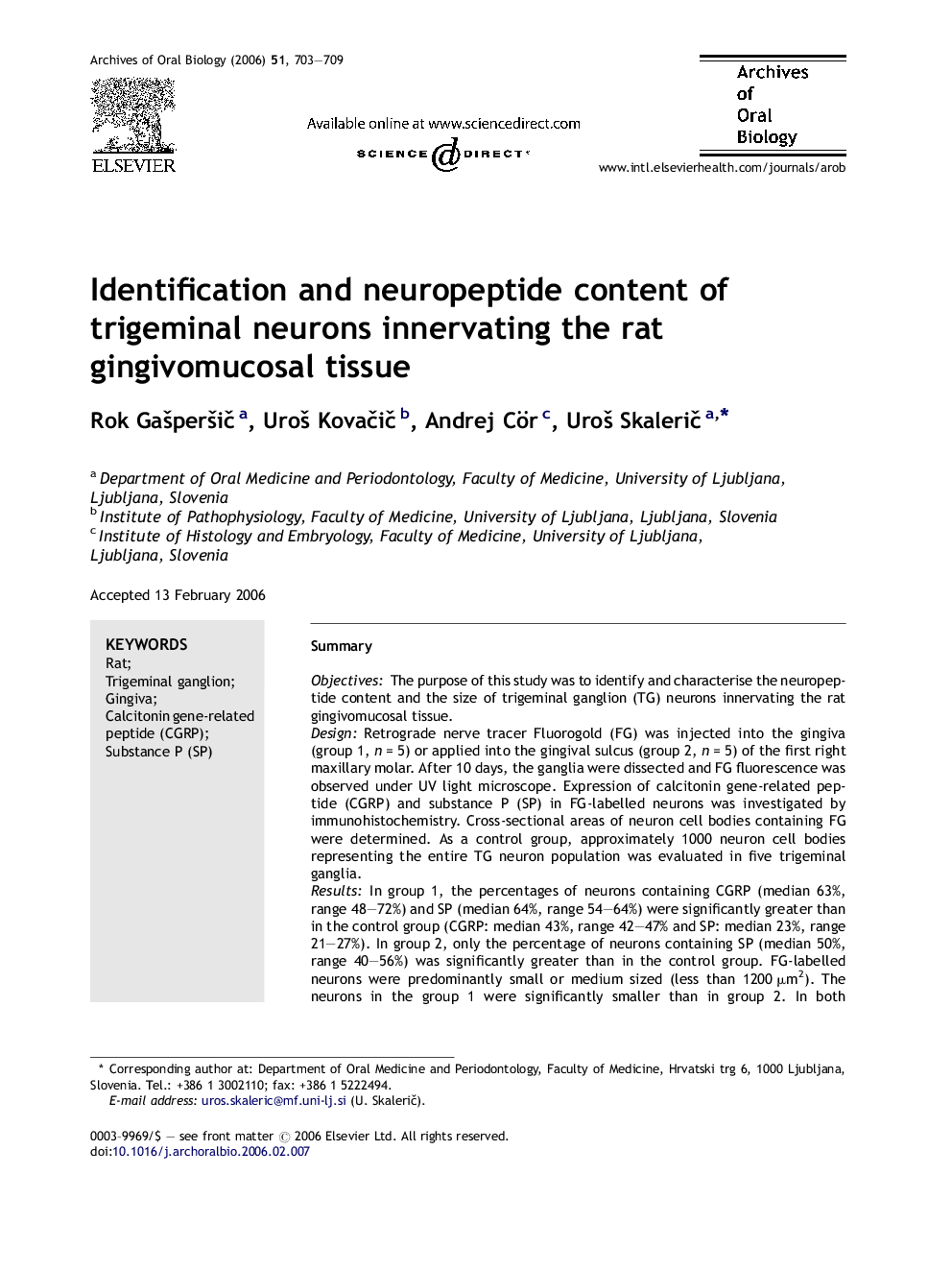| Article ID | Journal | Published Year | Pages | File Type |
|---|---|---|---|---|
| 3121416 | Archives of Oral Biology | 2006 | 7 Pages |
SummaryObjectivesThe purpose of this study was to identify and characterise the neuropeptide content and the size of trigeminal ganglion (TG) neurons innervating the rat gingivomucosal tissue.DesignRetrograde nerve tracer Fluorogold (FG) was injected into the gingiva (group 1, n = 5) or applied into the gingival sulcus (group 2, n = 5) of the first right maxillary molar. After 10 days, the ganglia were dissected and FG fluorescence was observed under UV light microscope. Expression of calcitonin gene-related peptide (CGRP) and substance P (SP) in FG-labelled neurons was investigated by immunohistochemistry. Cross-sectional areas of neuron cell bodies containing FG were determined. As a control group, approximately 1000 neuron cell bodies representing the entire TG neuron population was evaluated in five trigeminal ganglia.ResultsIn group 1, the percentages of neurons containing CGRP (median 63%, range 48–72%) and SP (median 64%, range 54–64%) were significantly greater than in the control group (CGRP: median 43%, range 42–47% and SP: median 23%, range 21–27%). In group 2, only the percentage of neurons containing SP (median 50%, range 40–56%) was significantly greater than in the control group. FG-labelled neurons were predominantly small or medium sized (less than 1200 μm2). The neurons in the group 1 were significantly smaller than in group 2. In both experimental groups, immunopositive neurons were significantly smaller than immunonegative neurons.ConclusionsThe majority of neurons in TG that innervate the rat gingivomucosa are small or medium sized and contain CGRP and SP.
